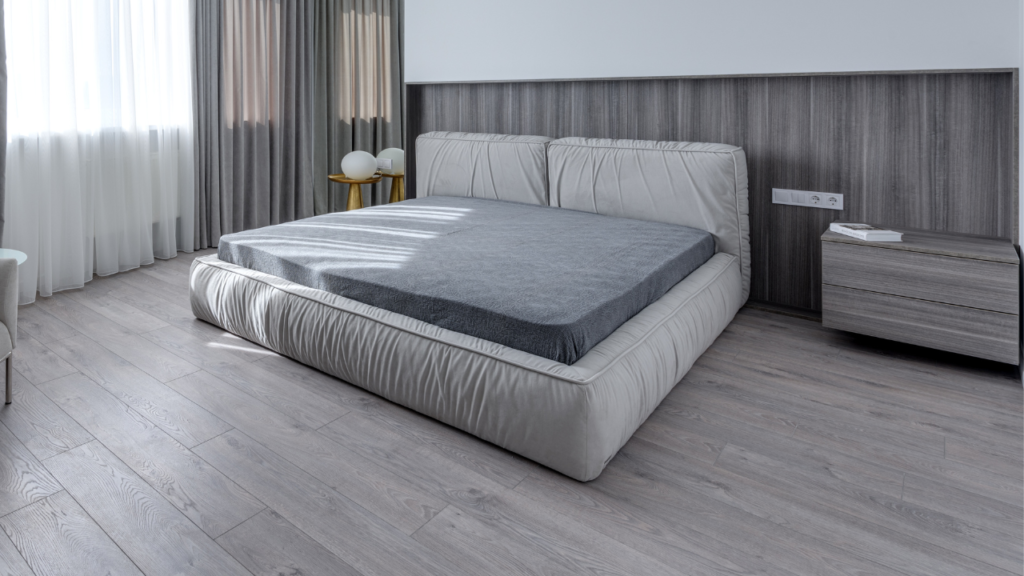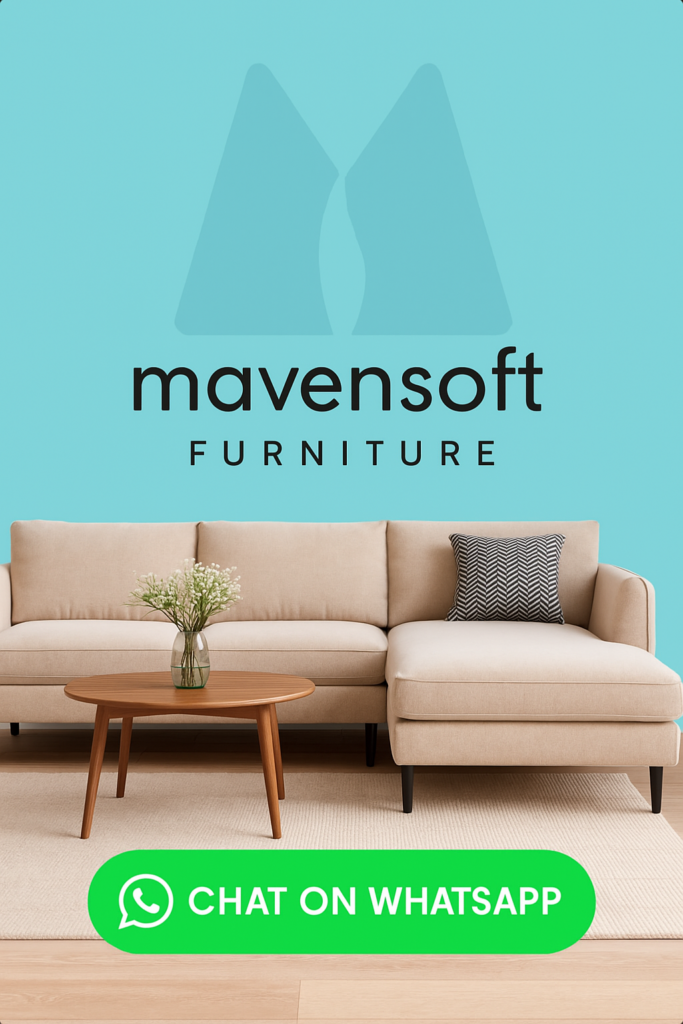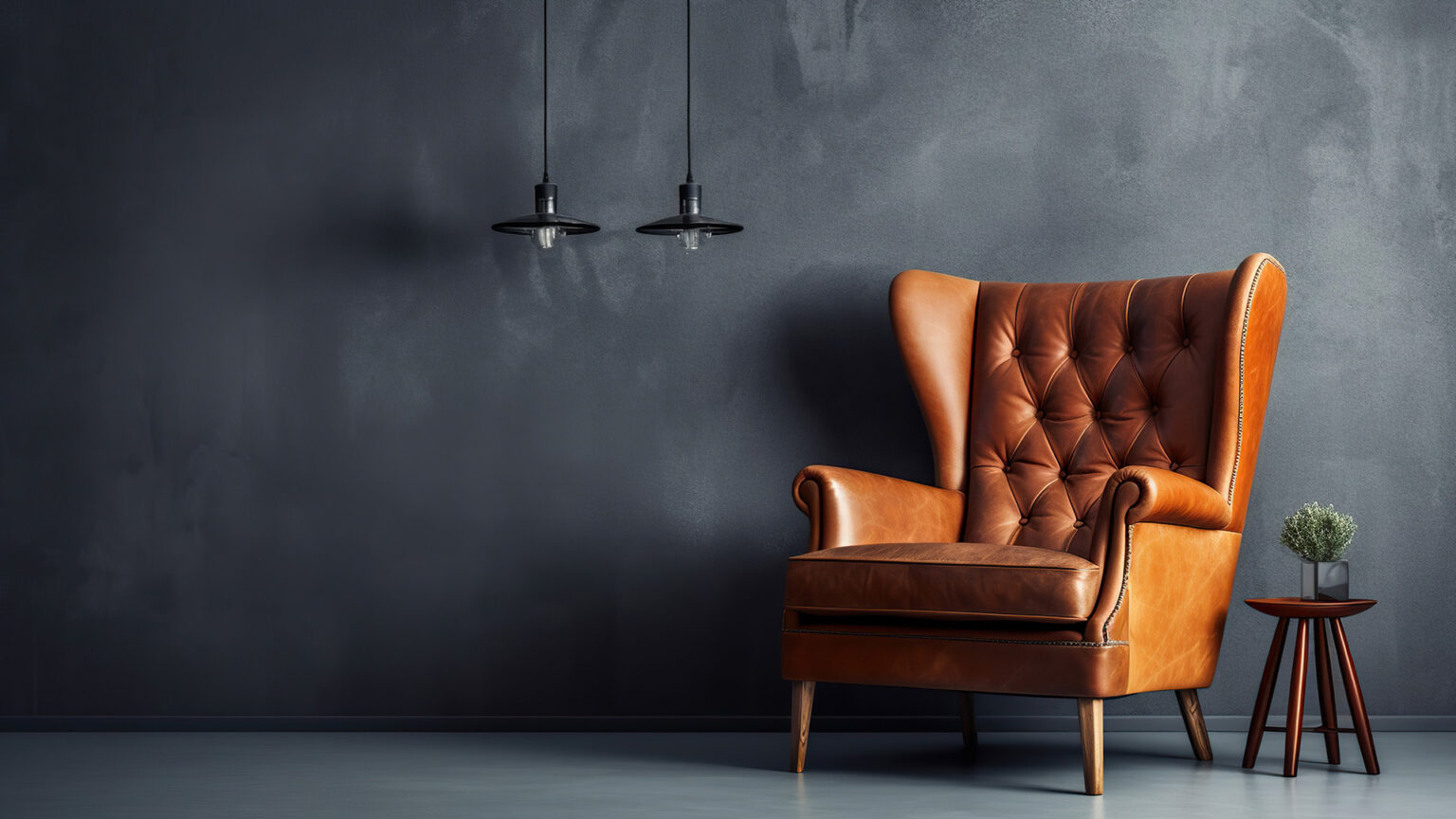How to choose the perfect sofa for your living room? Learn how to pick the right size, style, color, and material with expert tips for comfort, functionality, and style.
Understanding Your Living Room Space
Before falling in love with a sofa, measure your living room carefully. Record the length, width, and ceiling height, and note any doors or stairways it must pass through. Sketch the floor plan or use painter’s tape on the floor to outline the sofa’s footprint – this helps visualize its fit in the space. Also leave about 30 inches around the sofa for walkways and legroom; this clearance ensures people can move comfortably without bumping into furniture. Consider your room layout too: in an open floor plan, a sectional or modular sofa can anchor the space, while in a smaller, enclosed room a loveseat or standard sofa might make the layout feel cozier and not overcrowded.
Identifying Your Sofa Needs
Ask yourself: Who will be using this sofa?
If you have a large family or entertain often, a roomy sectional or a sofa with deep seats provides plenty of space. Solo dwellers or couples in tighter spaces might opt for a compact sofa or loveseat designed for two. Think about how you use the living room – if it’s a casual family lounge, durability is key; if it’s a formal space for guests, you may prioritize style.
How Many People Will Use It?
Big families or groups need ample seating. Loveseats (around 60–72 inches wide) seat two people and fit snugly in small areas, whereas standard sofas can reach 90–100 inches or more to seat three to six people. If multiple people use the couch daily (kids, partners, guests), choose a larger sofa or sectional. This Pexels photo shows a family sharing a sofa, illustrating that a wider couch accommodates parents and children together comfortably.
Multi-functional Use (Guests, Naps, TV)
If your sofa doubles as a guest bed or lounge spot for movie nights, consider a sleeper sofa or reclining model. Sleeper sofas provide a pull-out bed for overnight guests, while recliners let you and your family relax in full comfort during TV marathons.
Kid and Pet Considerations
For households with kids or pets, focus on durability and cleanability. Select performance fabrics or tightly woven polyester blends that resist stains and hide pet hair. Leather is also a strong choice: it’s smooth and easy to wipe clean of spills, plus it doesn’t trap dander. Avoid delicate materials like velvet or loosely woven chenille that attract dust and snag on claws. As one expert notes, quality sofas made from durable materials can survive “spills, sticky fingers, or cat claws”. In practice, family-tested sofas (like certain sectionals and modular couches) have “retained their cushion shape and fabric quality after a year of use” in a busy household. In short, prioritize sturdy upholstery and a tough frame in pet- and kid-friendly homes.
Choosing the Right Sofa Size
- Compact Sofas for Small Spaces: In tiny living rooms, pick smaller designs. Armless or slim-arm sofas save space. For example, loveseats (two-seaters) are typically around 60″ wide and work well in studios or secondary seating areas.
- Sectionals for Spacious Rooms: If you have an open or large space, a sectional sofa (which can seat 5+ people) maximizes seating and comfort for entertaining.
- Loveseats vs. Standard Sofas: Remember that standard sofas are wider: they can accommodate more people and allow stretching out. Loveseats, by contrast, are ideal as either solo seating in a small room or paired with a larger sofa as extra seating. Generally, a sofa will be much wider than a loveseat, so choose based on how many seats you need and how much floor space you can give it.
Sofa Styles That Fit Your Personality
Your sofa is a focal piece, so match it to your style:
- Modern/Minimalist: Look for straight, clean lines and low profiles. Modern sofas often have metal or simple wooden legs and simple silhouettes. Colors tend to be neutral (grays, whites) or bold solids for an accent piece.
- Traditional/Timeless: Classic sofas feature rolled arms, button-tufted backs, and plush cushions. Think of English or Chesterfield-style couches – they feel cozy and familiar.
- Mid-century & Scandinavian Options: Mid-century modern pieces have iconic tapered wooden legs, minimal decoration, and often muted or earthy colors. Midcentury design is known for simple, functional wooden furniture with clean geometric shapes. Scandinavian styles share that love of simplicity and function, often in light woods and fabrics.
While choosing style, remember interiors often blend influences, so pick a sofa that complements your existing decor rather than clashes with it.
Picking the Right Sofa Fabric
- Leather vs. Fabric: Leather sofas look sleek and age well; they repel spills (easy wipe) and don’t trap dust. High-quality leather can be very durable, though it may need conditioning to prevent cracks. Fabric sofas offer more color and texture options.
- Easy-Clean and Durable Materials: For homes with kids or pets, microfiber and performance fabrics (often polyester blends) are top picks. These fabrics resist stains and can be spot-cleaned. Designer guides note that “performance fabrics are often stain- and water-resistant,” making them kid- and pet-friendly.
- Allergen-Free Upholstery: If allergies are a concern, leather or microfiber are also good bets because they don’t harbor dust mites like fluffy fabrics do. Sofas with raised legs help you clean underneath more easily, too. Avoid ultra-plush weaves (like chenille or velvet) if dust and dander are issues.
Choosing the Best Color for Your Sofa
Color sets the room’s tone. Neutrals (beige, gray, navy) are timeless and versatile – they coordinate easily with pillows, rugs, or wall art. Bold colors (emerald green, mustard, deep teal) make a striking statement.
- Neutral Tones vs. Bold Colors: A neutral sofa allows you to change accent colors seasonally or as trends shift. Bold sofas become the centerpiece, so balance them with simpler surrounding decor.
- Coordinating with Room Decor: Choose sofa colors that complement your walls and flooring. For example, a dark navy couch can look stunning against crisp white or light gray walls. Accessorize with throw pillows and cushions in coordinating or contrasting patterns to tie it all together. Designer advice suggests mixing textures and accents (a wool throw here, a velvet pillow there) rather than trying to match everything too perfectly.
- Light vs. Dark Upholstery: Light sofas (cream, light gray) can open up a small space visually but may show stains more. Dark sofas hide wear and complement lighter walls. The key is contrast: pairing the sofa color wisely with the rest of the room so nothing clashes or feels washed out.
Understanding Sofa Fillings
What’s inside matters for comfort:
- Foam: High-density foam keeps its shape and offers firm support. Sofas with foam cushions tend to feel springy and consistent over time.
- Feather/Down: Feather or down cushions feel very soft and luxurious, giving a “sink-in” experience. They often come wrapped in foam for structure (feather-wrapped foam). These need frequent fluffing to maintain their loft, but many people love the cozy feel.
- Mixed Fillings: Many sofas use a combination (e.g., high-density foam core wrapped in feather or fiber). These hybrid cushions aim to balance support with softness.
- Maintenance and Comfort Levels: If you prefer a firm seat, choose solid foam. If you like plushness, down or a foam+down mix is ideal. Be prepared to periodically shake out feather cushions to keep them comfortable. In any case, avoid cheap fill (like low-density polyester), which will flatten quickly.
Sofa Frame and Build Quality
A sofa’s frame is its skeleton – choose wisely for longevity.
- Hardwood vs. Metal Frames: The sturdiest sofas use kiln-dried hardwood frames (oak, maple, ash, beech). These can last 20+ years without warping. Softwoods (like pine) are cheaper but more likely to bend or break over time. Metal frames are very rigid and resist warping, often extending a sofa’s life to 15–20 years, though they make the sofa heavier and cost more.
- Joint Construction and Durability: Look at how the frame is built. Corner-blocks, wooden dowels, and steel screws at joints indicate strong construction. Sofas glued and screwed at corners are much more durable than those held together only with staples.
- Testing for Longevity: In-store, do a quick durability check: lift one corner of the sofa about 10–15 cm. If the opposite corner lifts with it and the frame doesn’t twist, it’s well-built. Press gently outward on the arms to see if there’s any “give” – a solid frame will feel rigid. Also, check for a UFAC (gold) tag under cushions for safe, tested upholstery construction.

Trying Before Buying
Importance of Comfort Testing
Never buy sight unseen without testing comfort. Sit, stretch out, recline – make sure the sofa feels good for your body. Consider seat depth and back support: for tall people, a deep seat is nice, while shorter people might prefer shallower seating. If possible, lie down on it or sit for several minutes (as if watching TV) to judge how it feels for the way you’ll use it. The goal is that the sofa feels cozy, not like you have to leave as soon as you sit.
Online vs. In-store Purchase Tips
Shopping online offers variety and reviews, but double-check dimensions and return policies before you click “buy.” When shopping in a store, use that tactile advantage: feel the fabric, test the firmness, and ensure the quality matches descriptions. Read customer reviews if buying online, particularly about comfort and delivery. In both cases, know the seller’s warranty or return window in case the sofa isn’t as comfy as expected once it’s home.
Modular and Convertible Sofa Options
Flexible designs give you more use from your sofa:
- Sleeper Sofas: Also called sofa beds or futons, these convert into a bed for overnight guests. Some have pull-out mattresses; others fold flat. They’re great for small homes or frequent visitors.
- Reclining Sofas: Built-in recliners let one or more seats lean back on demand. These are perfect for relaxation and movie nights. Remember, reclining models need extra space behind them to fully tilt.
- Modular Seating Arrangements: These sofas come in separate pieces (like chaise, ottoman, armless unit) you can arrange in different configurations. They adapt as your needs change – add a section for guests, or split it into loveseats for separate rooms. Modular sofas (often from brands like Burrow or Joybird) let you customize shape, fabric, and size to fit your life and space.
Matching the Sofa with Your Interior Design
Your new sofa should feel like it belongs in the room:
- Coordinating with Rugs and Curtains: Tie the sofa into the room by echoing colors or textures. For example, pick a sofa color that complements your rug palette. If the rug has shades of blue and gold, a neutral sofa can be dressed up with pillows in those accent colors. Avoid matching everything exactly; instead, mix in a few accent pillows or a throw blanket that pick up colors from curtains or artwork.
- Blending with Wall Colors: Aim for balance. A dark-colored sofa can stand out beautifully against pale walls; conversely, a light sofa pops against a richer wall color. If your walls are bold (like dark green or navy), a neutral sofa can calm the scheme. If walls are neutral, a brightly colored couch adds interest. Just ensure the tones don’t clash – use a color wheel or design resources (like Houzz or Pinterest) for inspiration if unsure.
- Accessorizing with Cushions: Throw pillows are the easiest design hack. Use several cushions in various sizes and textures to make the sofa inviting. Mix solids, patterns, and textures (e.g., a velvet pillow with a knitted one) to create depth. For a tied-together look, at least one pillow should echo another element in the room (say, a green cushion matching a plant or a patterned pillow matching the curtains).
Budgeting for Your Sofa Purchase
Sofas span a wide price range, so plan wisely:
- Setting a Price Range: Decide your top budget before you shop. Quality sofas often start around a few hundred dollars for basic styles and can go into the thousands for custom or high-end designs. Factor in extra costs like sales tax and delivery fees. For example, a well-made mid-size sectional might run $1,000–$2,500, whereas a budget two-seater could be $400–$800. Determine what you can spend based on how long you plan to keep the sofa and how heavy the use will be.
- Hidden Costs (Delivery, Warranty): Don’t forget add-ons. Basic delivery might be free, but white-glove (inside placement) or assembly services often cost extra. Some retailers charge a disposal fee if they take away your old couch. Extended warranties or fabric protection plans can also add to the price – decide if they’re worth it for you.
- When to Splurge or Save: Invest in a solid frame and good filling if you plan to use the sofa daily; these are hard to replace later. You can often economize on things like leg style or removable cushion covers (since these can sometimes be replaced or restyled over time). In practice, spend more on the parts that determine longevity (frame, high-density foam, durable fabric) and save on “nice-to-haves” (like slightly fancier knobs or slipcovers) if you must.
Sustainable and Eco-Friendly Sofa Choices
For an earth-friendly home, look for green sofas:
- Recycled or Organic Materials: Seek out sofas made with sustainable components. Good choices include FSC-certified hardwood frames (from well-managed forests), cushions filled with recycled foam or natural latex, and fabrics like organic cotton, hemp, or recycled polyester. These materials avoid toxic chemicals and often use less energy to produce.
- Brands with Eco Certifications: Many reputable brands now highlight eco-credentials. For example, some sofas carry CertiPUR-US or Greenguard Gold certified foams (low VOC and free of harmful flame retardants). Others use Oeko-TEX certified fabrics (free of certain toxic dyes). Companies like Medley, Maiden Home, and The Futon Shop explicitly market sustainable sofas built with non-toxic glues and dyes. Checking for these certifications ensures you’re buying a couch that’s safer for your family and kinder to the planet.
Popular Sofa Brands and Retailers
Here are some well-known options for sofa shopping:
| Brand | Style Focus | Price Range |
|---|---|---|
| IKEA | Simple, Modern, Budget | $300 – $1,200 |
| Bay Window | Modern, Sustainable | $800 – $2,500 |
| Mavensoft furniture | Wide variety, Affordable | $200 – $1,500 |
| Design 8 | Mid-century, Customizable | $1,000 – $3,000 |
| Elevate X | Clean, Scandinavian | $800 – $2,000 |

Delivery and Placement Considerations
Before finalizing your purchase, plan the logistics:
- Measuring Entryways and Stairs: Measure all access points. Check the sofa’s dimensions against your doorway, hallway, and staircase widths and heights. A sofa that’s too large to fit through a door is useless, so measure twice. If delivery is complex (narrow hall, multiple turns), you may need a break-apart sectional or to ask about in-home assembly.
- Assembling and Protecting the Sofa: If your sofa ships disassembled, know what’s required. Keep basic tools handy (though many now use hand screws for easy assembly). Prepare the room by clearing a wide path. On delivery day, lay down moving blankets or cardboard on floors to protect hardwood or tile. Remove rugs and small furniture from the route. For peace of mind, consider white-glove delivery – movers will bring the sofa in, assemble it, and place it exactly where you want, then haul away packing materials. If you do it yourself, be cautious lifting heavy pieces; always lift with the help of another person or use sliders under the legs to avoid scratches.
Maintenance and Cleaning Tips
Sofas endure daily life, so keep them fresh:
- Daily and Weekly Care: Fluff and rotate the seat and back cushions weekly to promote even wear. Vacuum the sofa (and under cushions) every couple of weeks to remove dust, pet hair, and crumbs before they get ground in. Consider using a lint roller for quick surface clean-ups.
- Stain Removal Tips: For spills, act fast. Blot liquid spills with a clean cloth immediately. Check the sofa’s care tag – fabrics with a “W” or “WS” code can handle water-based cleaners. Use a mild upholstery cleaner or a DIY mix (e.g., a drop of gentle dish soap in water) for spot-cleaning fabric. Always test any cleaner on a hidden area first. For microfiber, rubbing alcohol on a white cloth often lifts stains without leaving water marks. Leather should be wiped with a damp cloth; use a leather conditioner occasionally. For tough stains (ink, red wine), use specialized upholstery stain removers.
- Professional Cleaning Advice: Every 6–12 months, consider a deeper clean. A professional upholstery cleaning or a rented steam cleaner can extract dirt and restore the fabric. As one expert recommends, treat either an entire cushion or whole sofa side to avoid water rings, not just the stained spot. For persistent odors (from pets or smoke), a thorough steam clean with odor-eliminating solutions can refresh the sofa. Always follow manufacturer care instructions to avoid damage.
FAQs: Choosing the Perfect Sofa
Q1: How do I match my sofa to my living room?
Pick a sofa color and style that harmonizes with your room’s palette and furniture. If your walls are neutral, a bold-colored sofa can add life; if your walls are colorful, a neutral sofa may be safest. Coordinate with accent pieces – use pillows, throws, or a rug that contains the sofa’s color to tie everything together.
Q2: What’s the best sofa style for comfort?
Comfort is personal, but generally sectionals and reclining sofas provide maximum relaxation. Look for deep seats (around 20–24 inches deep is great for lounging) and high, cushioned backs. Sofas with high-density foam or pocket-coil seats tend to support the body well.
Q3: Are sectionals a good idea?
Yes, especially in larger rooms. They offer flexible seating and often include a chaise for stretching out. Modular sectionals let you reconfigure pieces for entertaining or moving.
Q4: How long should a good sofa last?
A well-made sofa (kiln-dried hardwood frame, high-quality foam, durable fabric) can last 15–20 years or more with proper care. Cheaper models might last 5–7 years before sagging or creaking. Rotating cushions and following care guidelines extends life.
Q5: What sofa fabric lasts the longest?
Leather and tightly woven synthetic fabrics (like microfiber) are among the most durable. Leather resists tearing and, if properly maintained, can age beautifully. Performance fabrics engineered for heavy use also resist stains and abrasion.
Q6: Should the sofa be darker than the walls?
Either approach works. A dark sofa against light walls creates contrast and anchors the room, while a light sofa in a dark room brightens the space. The key is balance: if you go dark with the sofa, bring in light accents (pillows, throw) to keep it from looking too heavy, or vice versa.
Conclusion: Make the Right Choice for a Cozy, Beautiful Living Room
Choosing the perfect sofa is about balancing comfort, style, and practicality. Measure your room carefully and envision how the sofa will fit and flow in that space. Consider who will use it and for what (family movie nights, napping, hosting guests) – this will guide your choice of size, style, and materials. Inspect build quality (hardwood frames, reinforced joints) and test comfort in person when you can. And don’t forget the fun part: picking colors, fabrics, and pillows that express your taste and tie the room together. With these tips and a bit of careful research, your new sofa will not only look great in your living room, but also become a cozy centerpiece of your home for years to come.

